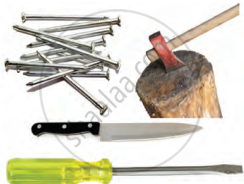Topics
Matter
Physical Quantities and Measurement
- Measurements
- Unit and Its Types
- Unit Systems
- Physical Quantities
- Rules and Conventions for Writing SI Units and Their Symbols
- International System of Units (Si System)
- Unit Prefixes
- Measurement of Length
- Devices for Measuring Length
- Measurement of Mass
- Devices for Measuring Mass
- Measurement of Time
- Devices for Measuring Time
- The Temperature and a Thermometer
- Measuring Temperature
- Area and It’s Unit
- Measurement of Area
Force
- Force - Push or Pull
- Effect of Force
- Types of Force: Contact Force
- Types of Force: Non-Contact Force
- Force of Friction
- Effects of Friction
- Kinds of Friction
- Advantages and Disadvantage of Friction
- Increasing and Reducing Friction
Energy
- Concept of Work
- Energy
- Machines
- Principle of Machine
- Efficiency of a Machine
- Simple Machines
- Mechanical Advantage
- A Lever
- Types of Levers
- A Pulley
- A Wheel and Axle
- An Inclined Plane
- A Wedge
- Screw
- Care of Machines
- Machines (Numerical)
Light
Magnetism
- Discovery of Magnets
- Classification of Magnets
- Magnetic and Non-magnetic Materials
- Magnet
- Magnetic Properties
- Magnetic Field
- Earth’s Magnetism
- Making a Magnet
- Electromagnet
- Making of an Electromagnet
- Applications of Electromagnets
- Care and Storage of Magnets
- Demagnetization of a Magnet
A wedge:
A wedge is a simple machine made by joining two inclined planes. It has a sharp edge that helps in cutting or splitting objects. When force is applied to the sharp edge of the wedge, it pushes objects apart or breaks them into two pieces. Wedges are very useful when we need to cut, split, or separate things.
For example: axe, knife, chisel, needle and nail.

Wedges
If you would like to contribute notes or other learning material, please submit them using the button below.

